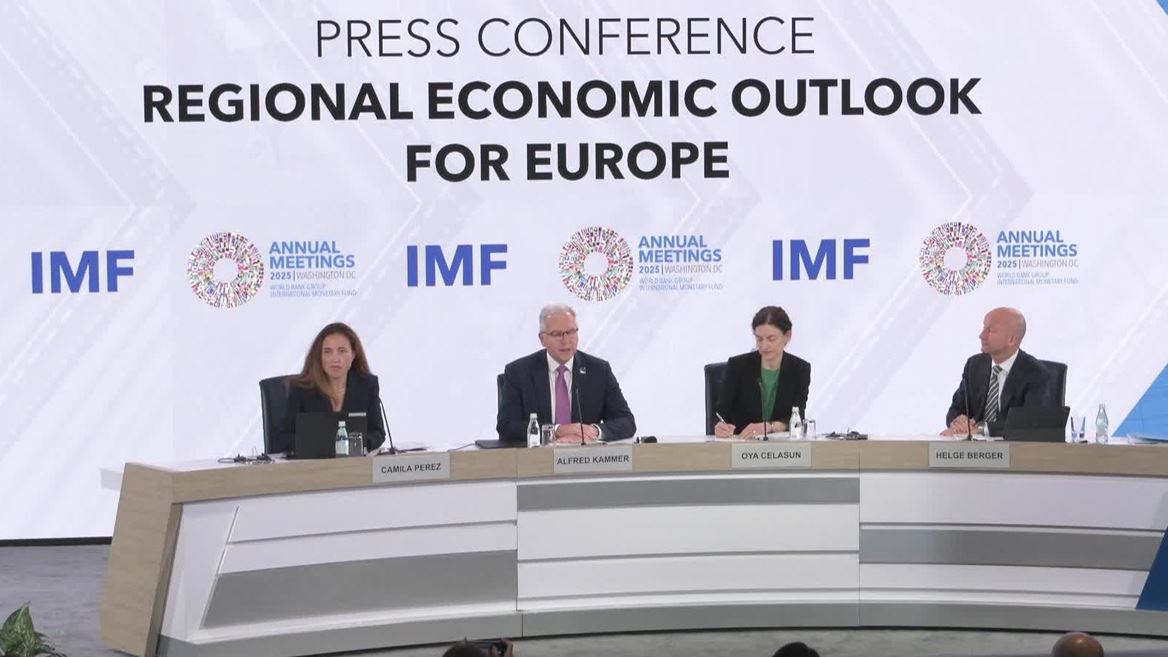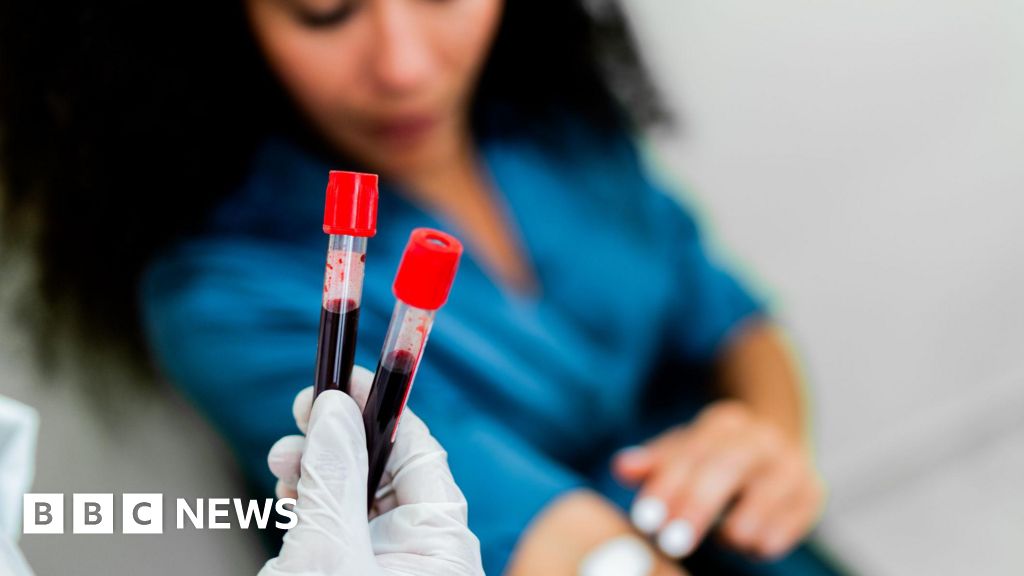Piastri had looked to be struggling compared with Norris since the start of practice and was a good chunk off the Briton in all three qualifying sessions.
Norris said: “Disappointed not to be on pole but not a surprise for us to be just a bit…

Piastri had looked to be struggling compared with Norris since the start of practice and was a good chunk off the Briton in all three qualifying sessions.
Norris said: “Disappointed not to be on pole but not a surprise for us to be just a bit…

The Lakers commemorative basketball designed by Arutyun Gozukuchikyan.
NBC Sports and all 30 NBA teams are celebrating the love of the game and their home cities with the 30 Rocks live activation, featuring the works of local artists ahead of…

Ponsegromab treatment over 64 weeks resulted in sustained improvements in body weight and suppression of growth differentiation factor 15 (GDF-15), a stress-induced cytokine, irrespective of prior treatment assignment, with a consistent…

Effective policy action helped steer Europe through a strong post-pandemic rebound, though the recovery is now moderating as the region faces renewed headwinds. At the International Monetary Fund (IMF) 2025 Annual Meeting, Alfred Kammer, Director of the IMF’s European Department, cautioned that the region is transitioning into a period of weaker medium-term growth.
“The pandemic and the energy crisis were huge shocks. And because of good policymaking, we entered into a recovery, and recovery unfolded as we expected. And, what we see is now the end of that recovery. And the end of that recovery goes into the medium-term, dismal, mediocre growth for Europe; that is what we have been predicting. Second point to make: on the short-term, the recovery is being driven by higher real wages and their supporting consumption, lower interest rates are providing support to investment spending, and we are facing new headwinds since earlier this year. And they come from trade tensions and geopolitical tensions. And when you’re looking at our short-term forecast for this year, they have been influenced by frontloading, as a response to these tariff threats earlier on, before they became available. And, when we’re looking at the impact of trade tariffs and uncertainty for [20]25-[20]26, they are going to shave off growth by 0.5% cumulatively. And they are only partially offset by higher infrastructure spending projected for Germany, and higher defense spending,” cautioned Kammer.
As the recovery slows, policymakers are advised to turn their attention from managing near-term momentum to consolidating policy gains. This recommendation comes against the backdrop of the euro area and European Central Bank’s success in bringing inflation under control, which has helped stabilize the monetary environment.
“We have reached the inflation target and it looks like we have reached that, durably. And what it means for ECB monetary policy that, they can stay at a terminal rate of 2%. And our recommendation for the ECB is to only change the policy rate if or when material shocks strike, which would materially change the inflation outlook. A slightly different situation in the CC [Central and Eastern European Countries] countries where inflation is still 1 to 3 percentage points above target; there is still a risk of the anchoring of inflation expectations. And therefore, CC countries need to be more cautious in the disinflation effort; they need to remain data-dependent, meeting-by-meeting and need to ease only gradually,” advised Kammer.
As inflation pressures ease across much of Europe, the focus shifts to the deeper reforms needed to lift Europe’s weak growth trajectory. Policymakers are urged to tackle long-standing constraints by reducing intra-European trade barriers, advancing deeper capital markets through a Capital Markets Union, improving labor mobility, and developing an energy union to enhance affordability and stability. These priorities are essential to strengthening competitiveness and resilience across the region.
“Europe has excellent examples in place on what to do and how to do it. We put these reforms together and they would – the Euro level reforms first step, and structural reforms domestically – they would actually give a boost to the level of GDP over 10 to 15 years by 9%; that’s a large number. Use the European budget in order to incentivize reform. Use the European budget to actually generate savings for the European public goods. And those are public investments into R&D; those are public investments into energy and into defense – because a coordinated approach will overall provide savings and will provide a more effective system. We add a big message this time to our REO [Regional Economic Organizations], and that is, you also need to focus on fiscal consolidation. The package on the European reform and on the structural reforms that is going to create – when implemented – a lift in productivity, it will increase the income of Europeans, and it provides resilience, and it will also help on the fiscal consolidation side,” predicted Kammer
But reform alone won’t shield Europe from mounting fiscal pressures. Long-term spending demands tied to aging-related healthcare, pensions, digital transformation, the energy transition, and higher borrowing costs are projected to steadily push debt levels higher. Without meaningful fiscal adjustment, public debt would double over the next 15 years, driving the average debt ratio across Europe to around 130% of GDP. Stabilizing debt levels will require a clear and credible fiscal consolidation path.
“Do the structural reform and the productivity-enhancing measures, because they will not only increase your income, they will also be a considerable contribution to the fiscal adjustment effort; and they could lower the fiscal adjustment requirement over the next five years, by one third to one half of the efforts. So, a huge and important contribution to make from these. So, all clear. And, also, I would say when you talk to European policymakers: very much agreed by all of them. And it’s always in the implementation, and to overcome the political economy, resistance. And that’s a really, really tough part to do. And we are trying to support the European policymakers in creating a narrative, because you need to discuss this with the population. We are providing numbers on the huge benefits of actually acting. And, policymakers need to find ways to overcome these obstacles and act. And our view is: Europe can act, Europe must act, and Europe must do so now,” concluded Kammer.

Effective policy action helped steer Europe through a strong post-pandemic rebound, though the recovery is now moderating as the region faces renewed headwinds. At the International Monetary Fund (IMF) 2025 Annual Meeting, Alfred Kammer, Director of the IMF’s European Department, cautioned that the region is transitioning into a period of weaker medium-term growth.
“The pandemic and the energy crisis were huge shocks. And because of good policymaking, we entered into a recovery, and recovery unfolded as we expected. And, what we see is now the end of that recovery. And the end of that recovery goes into the medium-term, dismal, mediocre growth for Europe; that is what we have been predicting. Second point to make: on the short-term, the recovery is being driven by higher real wages and their supporting consumption, lower interest rates are providing support to investment spending, and we are facing new headwinds since earlier this year. And they come from trade tensions and geopolitical tensions. And when you’re looking at our short-term forecast for this year, they have been influenced by frontloading, as a response to these tariff threats earlier on, before they became available. And, when we’re looking at the impact of trade tariffs and uncertainty for [20]25-[20]26, they are going to shave off growth by 0.5% cumulatively. And they are only partially offset by higher infrastructure spending projected for Germany, and higher defense spending,” cautioned Kammer.
As the recovery slows, policymakers are advised to turn their attention from managing near-term momentum to consolidating policy gains. This recommendation comes against the backdrop of the euro area and European Central Bank’s success in bringing inflation under control, which has helped stabilize the monetary environment.
“We have reached the inflation target and it looks like we have reached that, durably. And what it means for ECB monetary policy that, they can stay at a terminal rate of 2%. And our recommendation for the ECB is to only change the policy rate if or when material shocks strike, which would materially change the inflation outlook. A slightly different situation in the CC [Central and Eastern European Countries] countries where inflation is still 1 to 3 percentage points above target; there is still a risk of the anchoring of inflation expectations. And therefore, CC countries need to be more cautious in the disinflation effort; they need to remain data-dependent, meeting-by-meeting and need to ease only gradually,” advised Kammer.
As inflation pressures ease across much of Europe, the focus shifts to the deeper reforms needed to lift Europe’s weak growth trajectory. Policymakers are urged to tackle long-standing constraints by reducing intra-European trade barriers, advancing deeper capital markets through a Capital Markets Union, improving labor mobility, and developing an energy union to enhance affordability and stability. These priorities are essential to strengthening competitiveness and resilience across the region.
“Europe has excellent examples in place on what to do and how to do it. We put these reforms together and they would – the Euro level reforms first step, and structural reforms domestically – they would actually give a boost to the level of GDP over 10 to 15 years by 9%; that’s a large number. Use the European budget in order to incentivize reform. Use the European budget to actually generate savings for the European public goods. And those are public investments into R&D; those are public investments into energy and into defense – because a coordinated approach will overall provide savings and will provide a more effective system. We add a big message this time to our REO [Regional Economic Organizations], and that is, you also need to focus on fiscal consolidation. The package on the European reform and on the structural reforms that is going to create – when implemented – a lift in productivity, it will increase the income of Europeans, and it provides resilience, and it will also help on the fiscal consolidation side,” predicted Kammer
But reform alone won’t shield Europe from mounting fiscal pressures. Long-term spending demands tied to aging-related healthcare, pensions, digital transformation, the energy transition, and higher borrowing costs are projected to steadily push debt levels higher. Without meaningful fiscal adjustment, public debt would double over the next 15 years, driving the average debt ratio across Europe to around 130% of GDP. Stabilizing debt levels will require a clear and credible fiscal consolidation path.
“Do the structural reform and the productivity-enhancing measures, because they will not only increase your income, they will also be a considerable contribution to the fiscal adjustment effort; and they could lower the fiscal adjustment requirement over the next five years, by one third to one half of the efforts. So, a huge and important contribution to make from these. So, all clear. And, also, I would say when you talk to European policymakers: very much agreed by all of them. And it’s always in the implementation, and to overcome the political economy, resistance. And that’s a really, really tough part to do. And we are trying to support the European policymakers in creating a narrative, because you need to discuss this with the population. We are providing numbers on the huge benefits of actually acting. And, policymakers need to find ways to overcome these obstacles and act. And our view is: Europe can act, Europe must act, and Europe must do so now,” concluded Kammer.
A conference abstract presented at the European Society for Medical Oncology (ESMO) 2025 meeting looks at the…

San Francisco — San Francisco (AP) — An Easter egg dropped by Taylor Swift in the film for her new album is proving to be a boon for sea otters in Northern California.
The pop star wore a vintage Monterey Bay Aquarium otter conservation T-shirt…

The account menu was the last non-Material 3 Expressive aspect of Google Messages and it has now been updated.
Like all other Google apps, tapping on the account avatar in the top-right corner now opens a fullscreen page…

For some cases of bacterial vaginosis, treatment should include a package deal, doctors now say.
The American College of Obstetricians & Gynecologists (ACOG) updated its clinical guidance…

A blood test for more than 50 types of cancer could help speed up diagnosis according to a new study.
Results of a trial in north America show that the test was able to identify a wide range of cancers, of which three quarters don’t have any form…